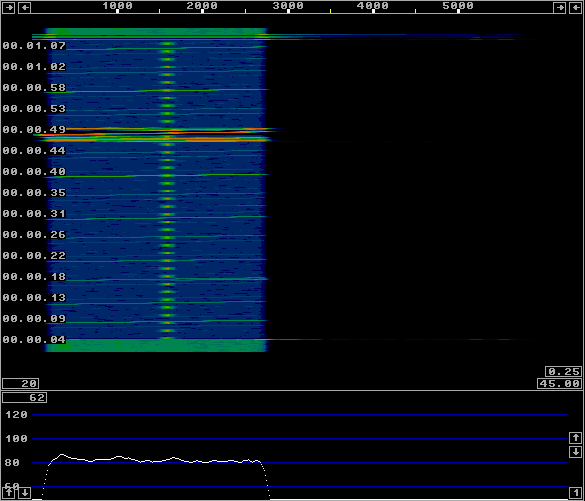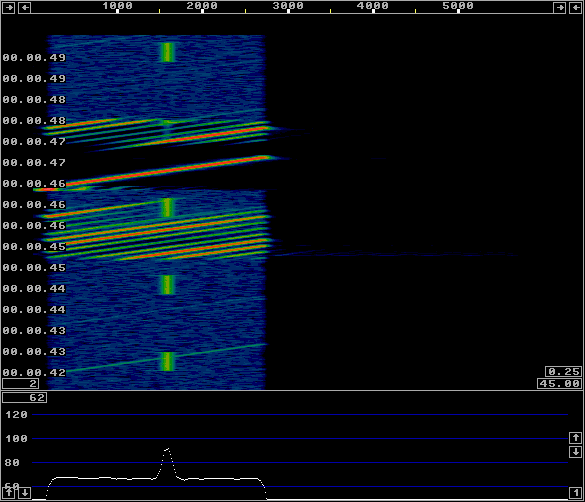
Fig 46. HDSDR running sim1.wav.
Test method.
HDSDRThis software is a Winrad derivative and it can play the original simulation file.When the test file is played with HDSDR version 1.00, the screen may look like figure 46. It depends of course how the parameters in HDSDR are set. | |

Fig 46. HDSDR running sim1.wav. | |
|
The loudspeaker output from HDSDR sounds like this:
sim1-hdsdr.mp3 (495264 bytes.)
The on-off keyed signal is at a level that is similar
to the noise floor level in the beginning and end of the
file where the data comes from an old Perseus recording.
The tested HDSDR version was Version 1.00 (Dec 23 2010) downloaded as HDSDRinstall.exe on JAN 27 2011. The details of the loudspeaker output are shown in figures 47 and 48 which are waterfall graphs produced by Linrad with sim1-hdsdr.mp3 as the input (before conversion to mp3). | |

Fig 47.The loudspeaker output from HDSDR when running the test recording sim1.wav. This waterfall graph is produced by Linrad with the loudspeaker output from HDSDR as input. | |

Fig 48.The loudspeaker output from HDSDR This the same as figure 47 at a 10 times higher waterfall speed. | |
| The loudspeaker output of HDSDR on an oscilloscope looks like figures 49 and 50 at different X-axis magnification. | |
 
Figs 49 and 50 The loudspeaker output from HDSDR in the time domain when the signal sweeps across the filter. | |
|
The filters in HDSDR are not quite good enough to match modern hardware.
The wide range spurs are similar in amplitude as the -120 dB on-off keyed
test tone.
On a modern SDR with a noise floor below -150 dBc/Hz those spurs will be
well audible.
The close range spurs are much stronger, but in real cases probably
less significant since transmitters seldomly have very clean spectra.
To SM 5 BSZ Main Page |